
Few -- if any-- of the big budget blockbusters these days don’t feature digital doubles. Photorealistic computer graphics renderings of actors, or “digi doubles” – as they are affectionately referred to by visual effects artists – are immensely useful. For one thing, they’ve revolutionized how filmmakers approach stunt work. Previously, stunts were limited to what could be achieved practically on set by flesh-and-blood performers, or through the use of elaborate animatronic dummies and the like.
Thanks to advances in visual effects technology, digital doubles can now undertake stunts that would be too dangerous for an actual stuntman to attempt, and far more convincingly than any dummy. What’s more, they’re also able to perform feats that , would be impossible outside of a virtual environment. Digital doubles aren’t just pixelized stuntmen – they come in handy in other, more understated scenarios, too. They can be integrated into scenes which would otherwise require an actor to interact heavily with all-CGI creatures or artificial sets, ensuring for a more seamless cohesion between the elements involved.
Digital doubles are an incredibly valuable tool, as long as they don’t call attention to themselves, that is. Therein lies the biggest problem with these artificial actors: since they’re based on celebrity likenesses, if they’re even slightly off, the audience will notice – and they won’t be impressed!
With this in mind, we’ve taken a look back over the last few decades of cinema, and rounded up this list of 20 Movies Hurt By Crazy CGI Actor Stand-Ins.
20 Superman Returns - Brandon Routh
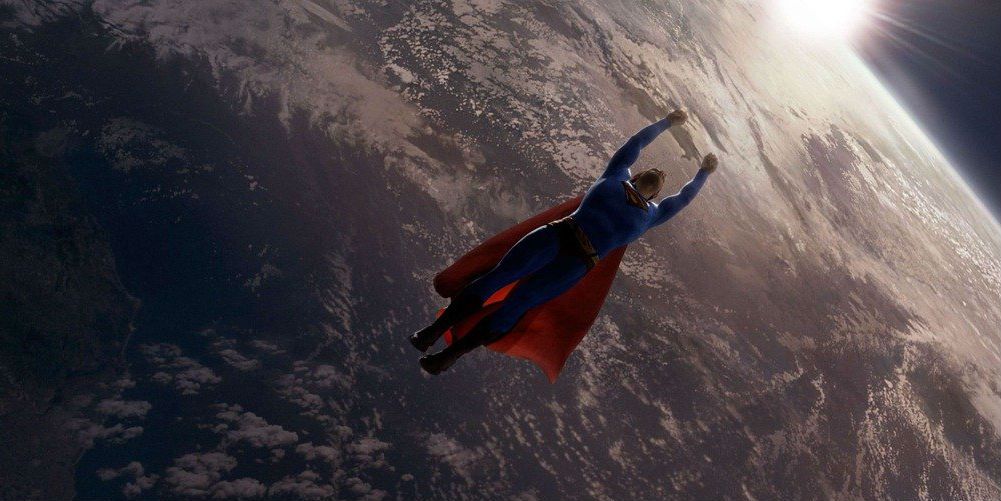
Superman Returns, Bryan Singer’s 2006 soft reboot of the franchise starring Brandon Routh as the Man of Steel, showcases some truly breathtaking flying sequences. These were accomplished through a mixture of different techniques, including on-set wirework, green screen compositing and digital doubles.
Of the methods utilized, it’s the digital double of Routh that yields that most mixed results. Certain shots are so well-rendered you won’t even realize you aren’t looking at the genuine article whereas in other instances, it’s glaringly obvious. Typically, this occurs during close-up scenes where it seems like live-action footage of Routh could have been employed. Like during the climax of the otherwise brilliantly executed plane rescue scene or even a straight-forward shot of the Last Son of Krypton flying past the camera at sunset – both of which employ a digital double for no apparent reason.
19 The Matrix Reloaded - Keanu Reeves
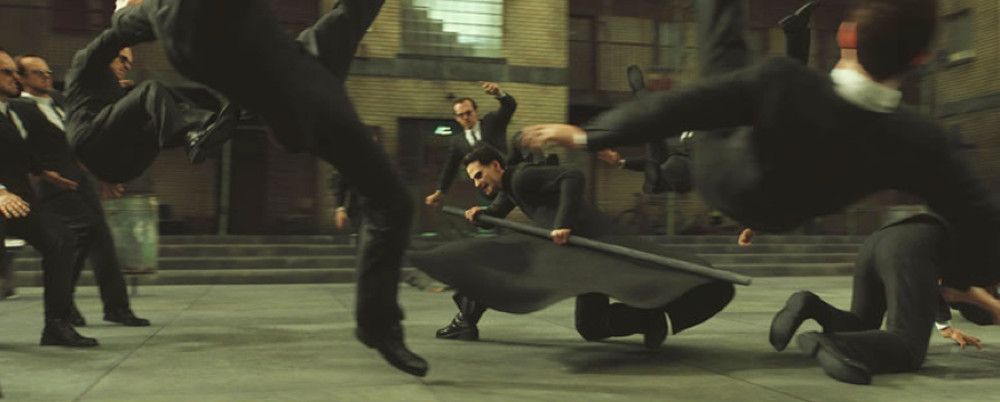
When it came to following up their groundbreaking efforts on the first Matrix installment, the Wachowskis set out to once again redefine audience expectations for an action set piece. As you’d probably expect, digital doubles had an important part to play in realizing the auteur siblings’ bold vision. Unfortunately, though, mid-2000s visual effects just weren’t yet at the level required to create believable human facsimiles to the extent required by The Matrix Reloaded.
This applies most of all to the CGI Keanu Reeves who appears at various points throughout the film – not that you needed us to point him out.
Whether cyber messiah Neo is streaking across the sky or taking on a horde of Smith duplicates, this digital double sticks out thanks to his ragdoll-like movements and too-smooth skin and cloth textures.
18 The Fellowship Of The Ring - The whole Fellowship
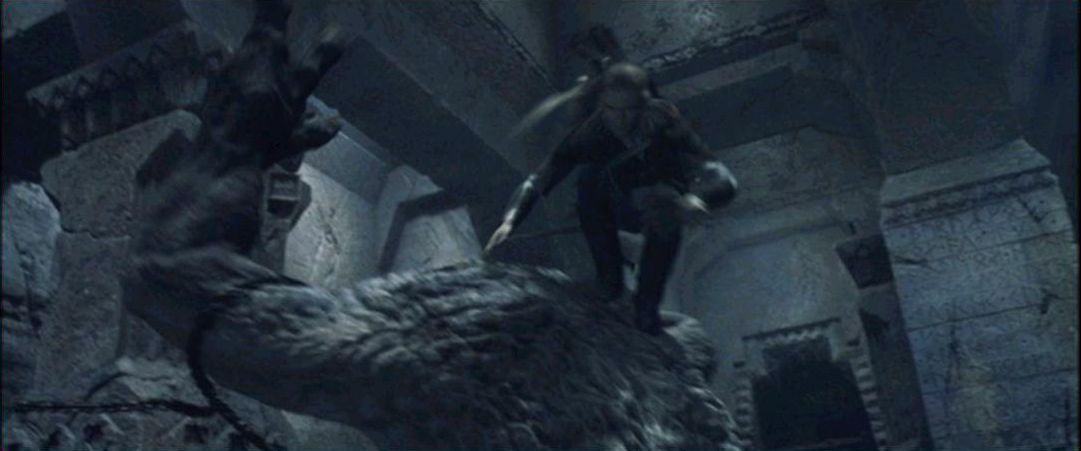
Like the rest of the The Lord of the Rings trilogy, The Fellowship of the Ring boasts numerous instances of incongruous digital doubles. Still, the film was released in 2001 – so it’s hardly surprising that at least a few of these shots have aged poorly.
If we had to narrow it down to just one sequence, we’d plump for the skirmish in, and subsequent chase through, the mines of Moria. For starters, there’s the CGI stand-in for Orlando Bloom’s Legolas, who clambers all over the cave troll before jumping in front of the camera – and suffers from unrealistic textures. Then, there are the wide-shots of the Fellowship hotfooting it for the exit. Here, it’s plain that digital doubles of all nine cast members are on screen, especially Ian McKellen, whose Gandalf is too sprightly to be believed.
17 Terminator 2: Judgment Day - Arnold Schwarzenegger
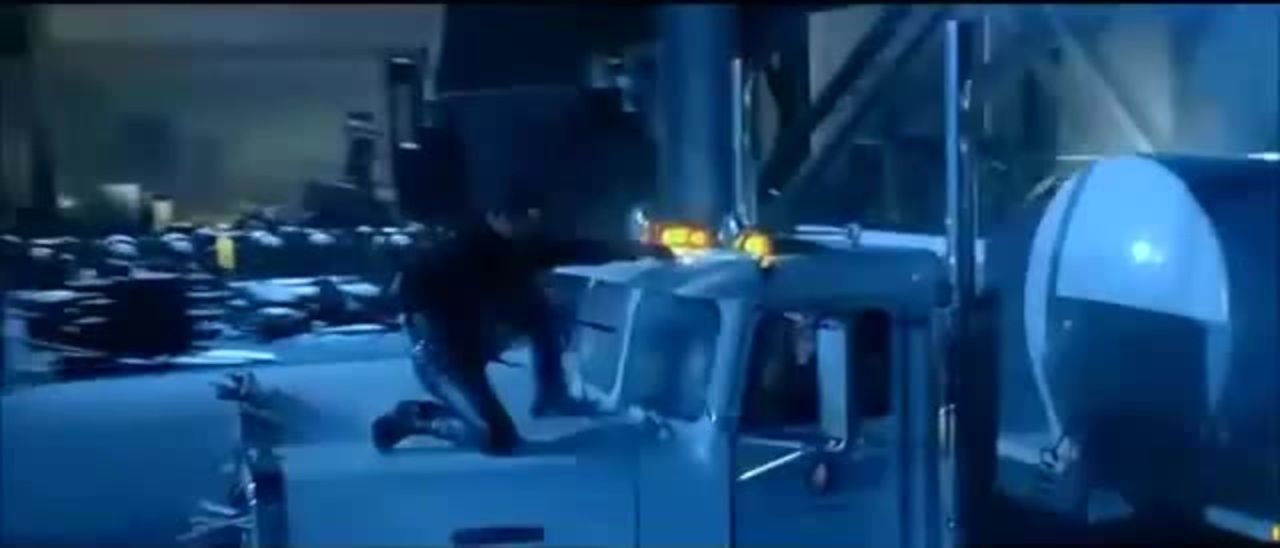
The visual effects used to bring liquid metal antagonist the T-1000 to life in Terminator 2: Judgment Day represent a watershed moment in the development of CGI. While the majority of T-1000 shots by legendary effects house ILM still hold up today, other instances of digital trickery in James Cameron’s action/sci-fi classic haven’t fared so well.
Take the scene where Arnold Schwarzenegger’s T-800 launches itself to safety from an overturned tanker.
Now, it’s definitely Arnie in the close-ups, and we’re willing to bet it’s probably a stunt performer for the wider angles. Regardless, everything looks good-- until the T-800 hits the ground. At this point, the Terminator executes a forward roll towards the camera – and based on the stiff animation and questionable physics on display, the guy in these shots is unmistakably a digital double.
16 Daredevil - Ben Affleck and Colin Farrell
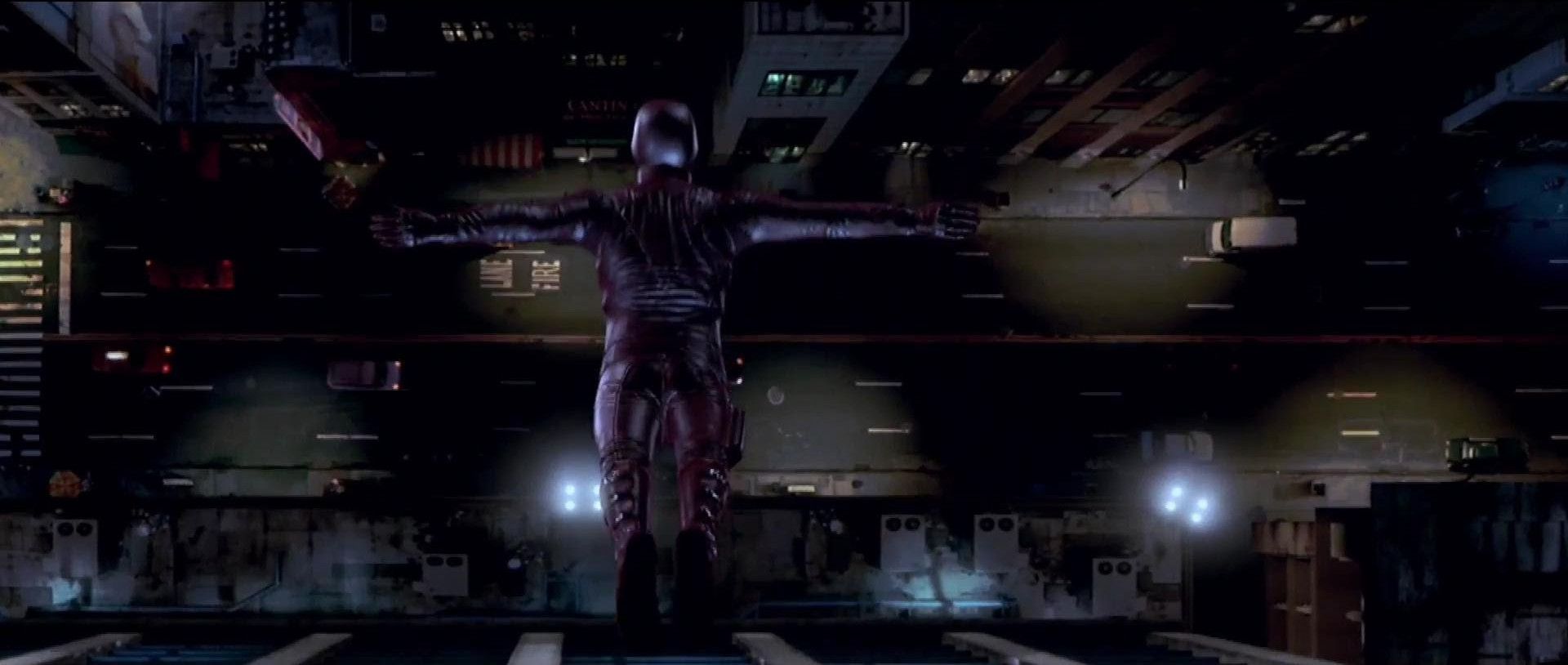
2003 superhero misfire Daredevil is plagued by two major weaknesses: obvious wirework and fake-looking digital doubles. The end result is that very few of the action scenes in the movie are believable. There are almost too many instances to count, but perhaps the best way to illustrate our point is to highlight the fights between Daredevil and Bullseye.
The CGI stand-ins for Ben Affleck and Colin Farrell are so badly rendered that they resemble action figures rather than living, breathing people.
The pair’s first encounter epitomizes the digital models’ shortcomings early on. Here, the plastic-looking textures used are particularly noticeable on Bullseye’s exposed, bald head as Daredevil kicks him off his motorcycle in slow motion.
15 Harry Potter And The Sorcerer's Stone - Daniel Radcliffe
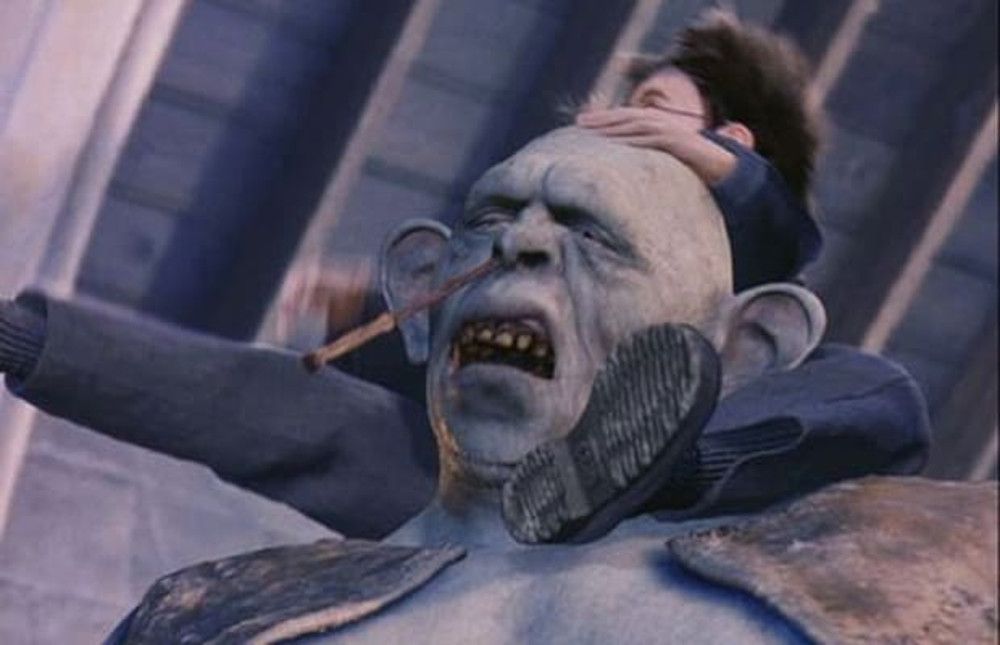
The visual effects in Harry Potter and the Sorcerer’s Stone often look positively primitive compared to later entries in the series. It’s easy to criticize the cartoonish CGI creatures in the file, but the digital doubles for the human members of the cast aren’t a whole lot better, either. Things really hit a low point when Harry, Ron, and Hermione tangle with a troll in the girl’s bathroom at Hogwarts.
Every visual effects element in this scene is shoddily handled, especially Daniel Radcliffe’s CGI counterpart, who ends up clinging to the troll’s shoulders. What makes Radcliffe’s digital double so bad? As even a cursory glance makes painfully apparent, this faux-Harry looks less like the actor he’s meant to portray, and more like a character model from a video game released at the time.
14 Spider-Man - Tobey Maguire

Sam Raimi’s first Spider-Man outing was a resounding critical and commercial success that helped pave the way for the current box office domination by the superhero genre. That said – boy, have many of the visual effects in this flick aged terribly!
Quite a few of the CGI-heavy shots were considered sub-par when the film was released back in 2002.
Among the worst are the shots that depict Peter Parker bounding from rooftop to rooftop as he revels in his newfound superpowers. The digital double of Tobey Maguire could not be more obvious, thanks to its lackluster textures and unnatural animations. While this certainly applies to the side-on angles, it’s most evident in the overhead shots, which look like they could have been taken from the first two Grand Theft Auto games.
13 Star Wars – Episode I: The Phantom Menace - Ray Park
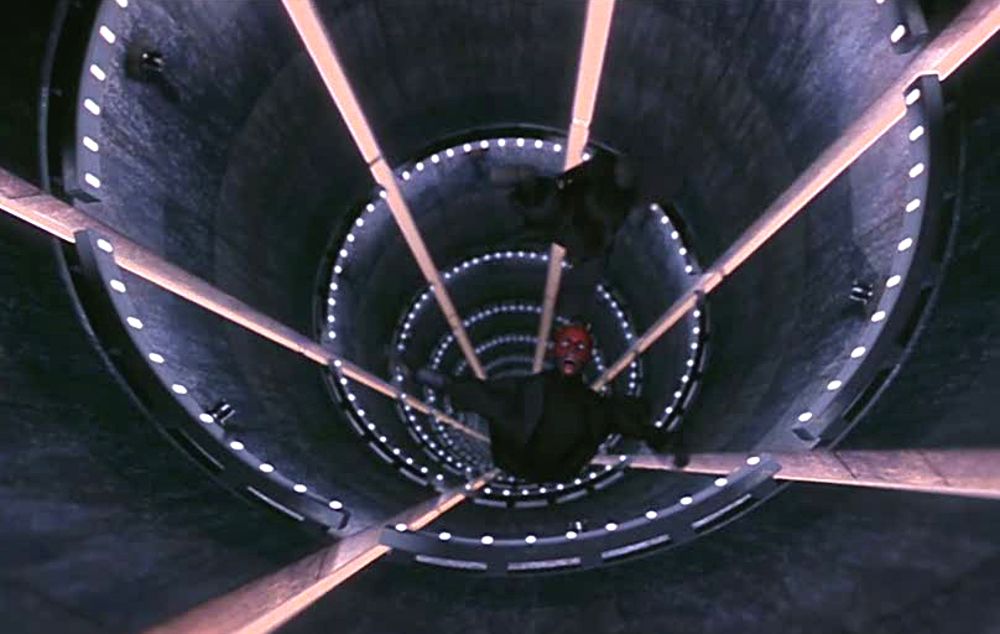
As this list makes abundantly clear, the Star Wars prequels have a pretty patchy track record when it comes to unobtrusive digital doubles. Of the three films, The Phantom Menace has the fewest charges to answer, but that doesn’t mean there aren’t occasions when CGI stand-ins draw far too much attention to themselves.
Far and away the worst offender is the digital double of baddie Darth Maul, which subs in for actor Ray Park when the character is defeated. Maul is sliced in two, so it’s understandable that director George Lucas opted to go with a CGI representation of Park to depict both halves of Maul’s body tumbling into the void. Frustratingly though, the finished result is beyond fake-looking, due to its floppy limbs and cartoonish likeness.
12 Thor: Ragnarok - Cate Blanchett
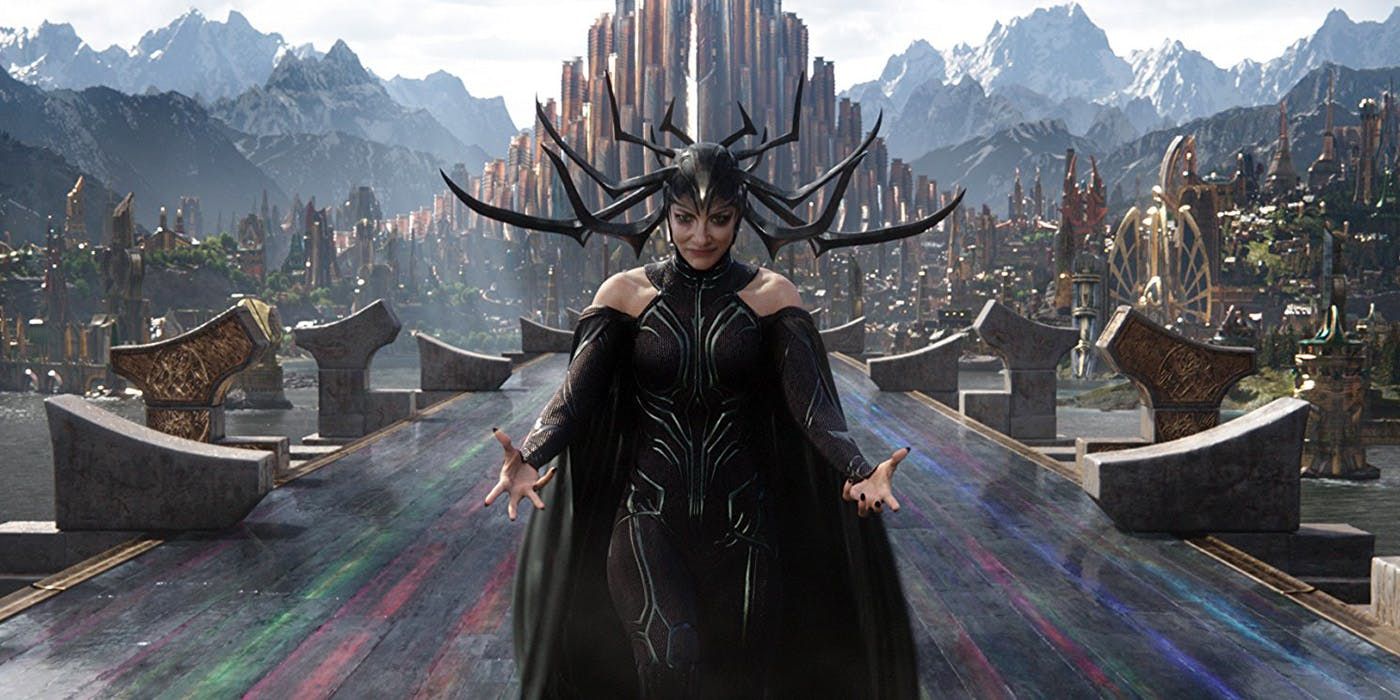
As villainess Hela in Thor: Ragnarok, Academy Award-winning actress Cate Blanchett sports a costume partially augmented with CGI. For the most part, the visual effects work involved is near-impossible to pick – it’s just a shame the same can’t be said for Blanchett’s digital double, as well. The CGI Hela comes into play most prominently when the vengeful goddess conquers the kingdom of Asgard, facing off against an entire army single-handledly in the process. In case the scene description doesn’t give it away, it’s pretty exciting stuff – although it’s undermined somewhat by the pixelized performer that takes centre stage.
Admittedly, Hela isn’t the only obviously artificial element on screen – even the least discerning viewer in the world can tell many of the shots are 100% CGI – but she’s arguably the most distracting.
11 The Hobbit – The Battle Of The Five Armies - Orlando Bloom
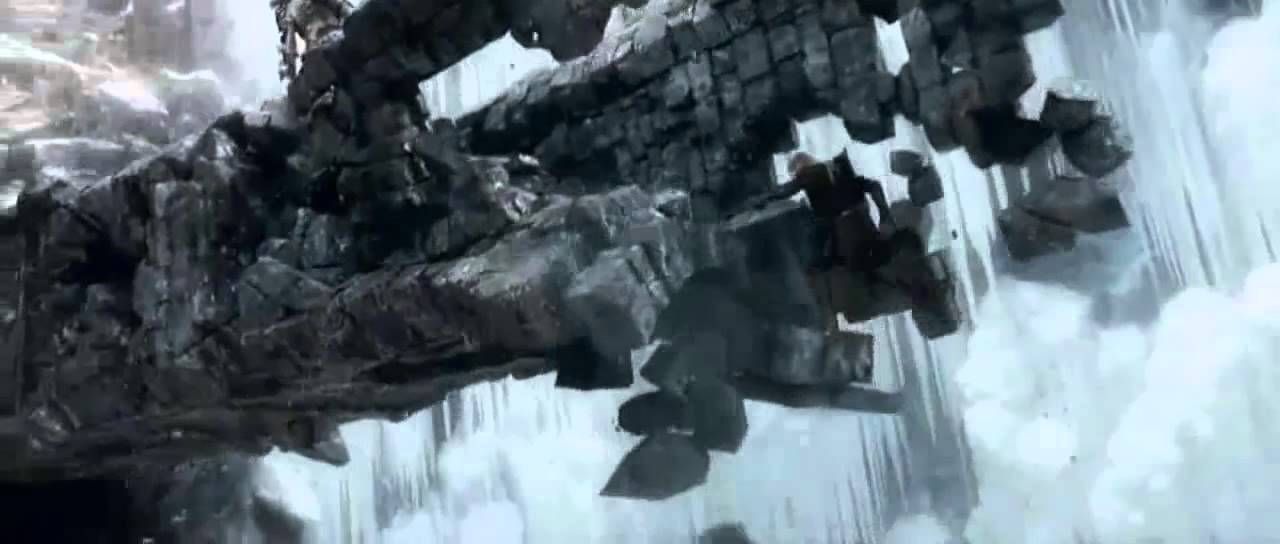
Director Peter Jackson was roundly criticized for the over-use of CGI in The Hobbit trilogy, especially in comparison to the more subdued approach he brought to The Lord of the Rings. Things really come to a head in The Battle of the Five Armies, which is marred by needlessly all-CGI characters like Billy Connolly’s Dain, and battle scenes populated with identical digital elves.
The visual effects used on the stand-in for Orlando Bloom really take the cake.
On first blush, this might not appear to be the case: after all, the artificial Legolas is virtually indistinguishable from its flesh-and-blood inspiration. But once said digital double starts performing physics-defying stunts more commonly associated with video games than live-action movies, the difference between it and Bloom himself couldn’t be more plain!
10 Black Panther - Chadwick Boseman and Michael B. Jordan
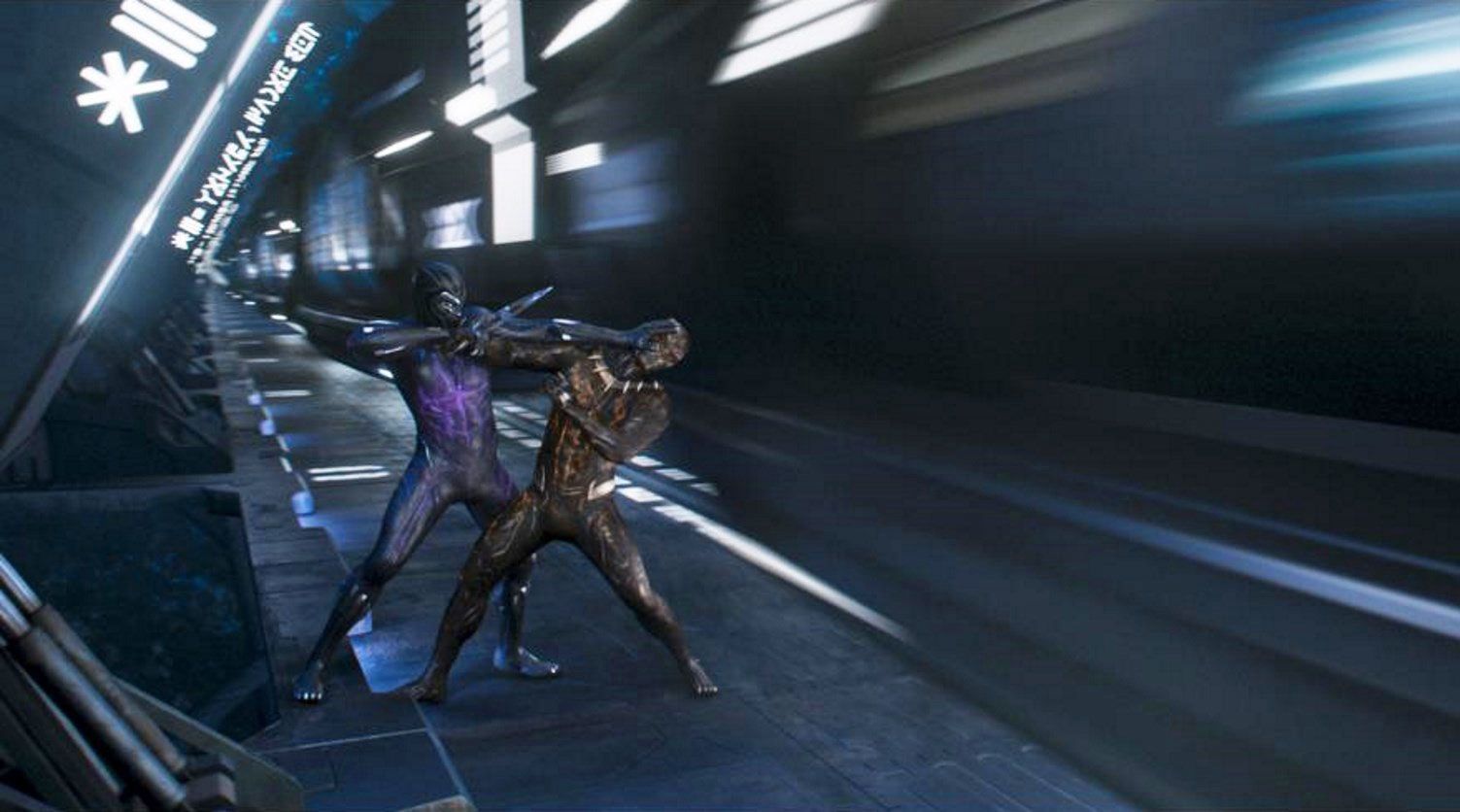
Black Panther was rightly celebrated for being the first superhero film with a predominantly black cast. Despite the movie’s strong reviews and box office performance, it didn’t escape critics highlighting the uneven CGI quality on display. The number one culprit here was Black Panther’s digital doubles, which rank amongst the very worst in any Marvel Studios joint. Both the eponymous hero and his nemesis Killmonger dress in head-to-toe body armor, which should theoretically make capturing the likeness of stars Chadwick Boseman and Michael B. Jordan a cinch.
Disappointingly, the actors’ poorly rendered stand-ins dominate the disconcertingly dull final showdown between Black Panther and Killmonger.
This is probably why the ritual combat at the waterfall shown earlier on – which showcases the real Boseman and Jordan – is so much more riveting to watch!
9 Indiana Jones And The Kingdom Of The Crystal Skull - Shia LaBeouf
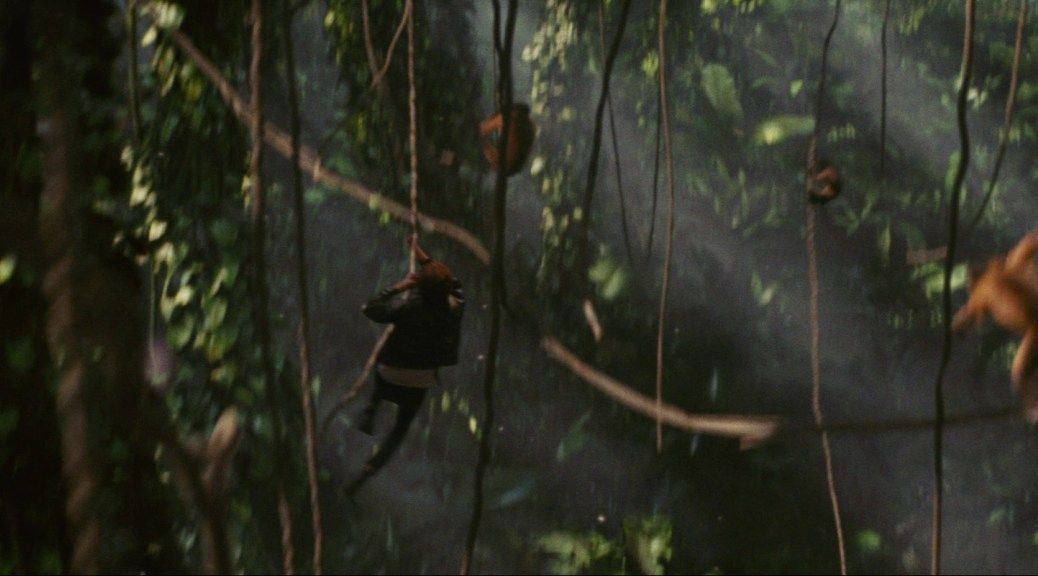
A large part of the appeal of the Indiana Jones franchise is its old-school charm, and that extends to an emphasis on daring exploits undertaken in-camera by highly-skilled stunt performers. Somewhere along the way, director Steven Spielberg lost sight of this-- if the much-maligned “monkey scene” in belated fourth installment, Kingdom of the Crystal Skull, is anything to go by.
Indy’s sidekick Mutt does his best Tarzan impression, swinging from vine to vine among the treetops and simian wildlife of the Amazon jungle.
This would already skirt dangerously close to cheesy, even if it had been a practical stunt – but the decision to rely heavily on CGI pushes things into truly embarrassing territory. Simply put, the live-action coverage of actor Shia LaBeouf conspicuously fails to match with the dubious wide-angle shots of LaBeouf’s digital double.
8 Man Of Steel - Henry Cavill AND MICHAEL SHANNON
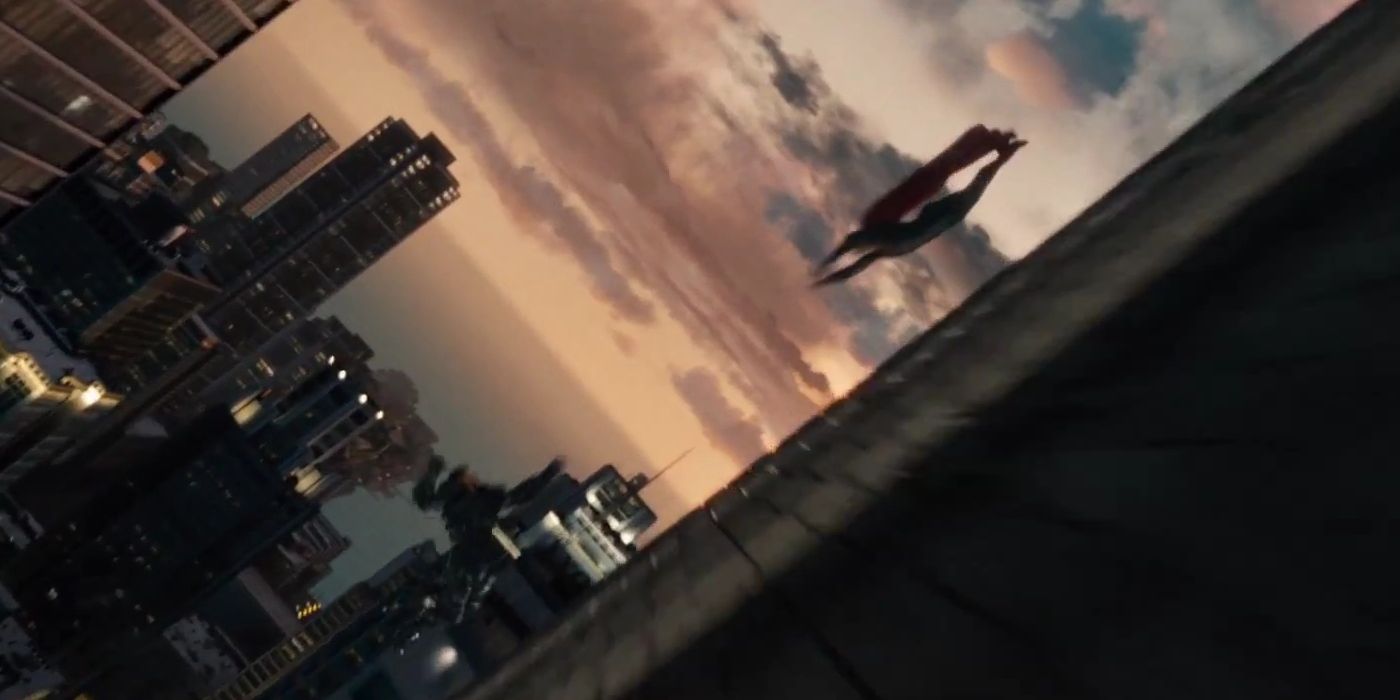
The flying scenes in Zack Snyder’s Man of Steel are marked improvement on those seen in Superman Returns – which isn’t to say they’re perfect across the board. On the contrary, Snyder’s radical reinterpretation of the greatest superhero of them all can lay claim to more than its fair share of unconvincing digital double shots, too.
The bulk of these manifest themselves during the epic brawl between Superman and General Zod. The scene repeatedly demands that the CGI stand-ins for stars Henry Cavill and Michael Shannon blend indistinguishably with their flesh-and-blood counterparts. Unfortunately, these constant transitions prove far from smooth due to the unrealistic digital models, and the switch from real to artificial actors is often jarring.
7 Star Wars – Episode II: Attack Of The Clones - Hayden Christensen
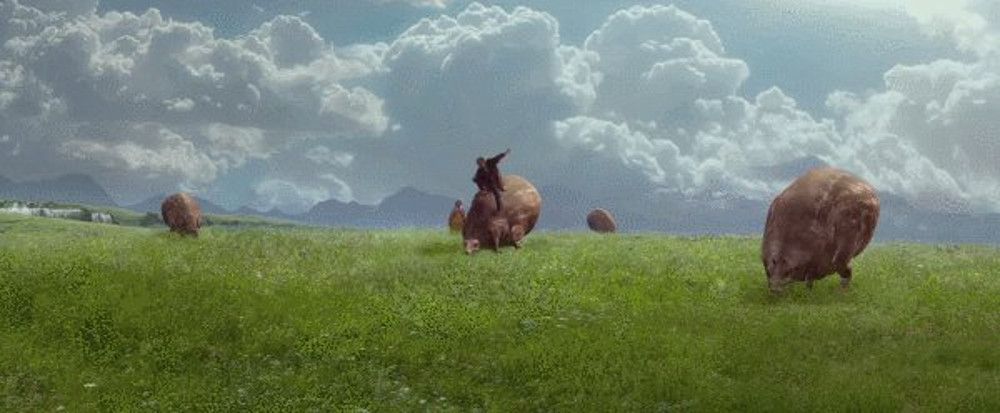
Digital doubles play a more prominent role in Attack of the Clones than they do in The Phantom Menace, though the advances in visual effects made between the two Star Wars films isn’t always obvious. Sure, the CGI stand-in for Temuera Morrison’s armor-clad bounty hunter Jango Fett almost always looks believable, but the digital doubles for Hayden Christensen and Ewan McGregor – Anakin Skywalker and Obi-Wan Kenobi, respectively –don't measure up.
In particular, Christensen’s CGI doppelgänger has a bad habit of drawing attention to itself.
Eagle-eyed viewers will spot this blurry character model at certain points during the speeder chase and climatic lightsaber duel. Moreover, the only way anyone could miss the double when Anakin surfs on the back of a space cow on Naboo is by keeping their eyes shut – which, on second thought, we recommend!
6 The Matrix Revolutions - Keanu Reeves and Hugo Weaving
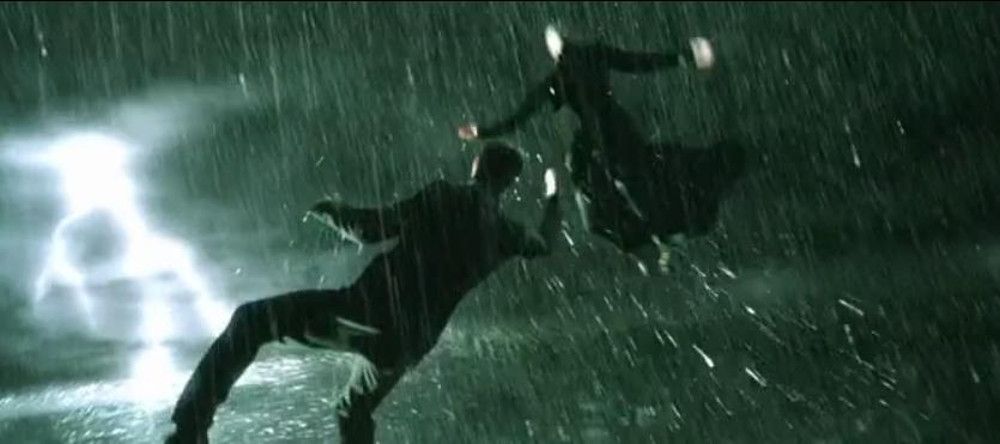
As The Matrix Reloaded and The Matrix Revolutions were produced simultaneously, the visual effects shortcomings of the first sequel in the franchise were carried over to the second.
Those hoping that the digital doubles would be improved for the third and final Matrix outing were left bitterly disappointed.
It must have been equally frustrating for the fight choreography team who coordinated the live-action segments of the earth-shaking slugfest between Neo and Smith, too. Think about it: they – along with actors Keanu Reeves and Hugo Weaving – put in a monumental amount of effort to deliver a well-orchestrated set-piece, only to be overshadowed by the inferior CGI stand-ins that handle the brunt of the aerial combat sequences.
5 Spider-Man 3 - Tobey Maguire
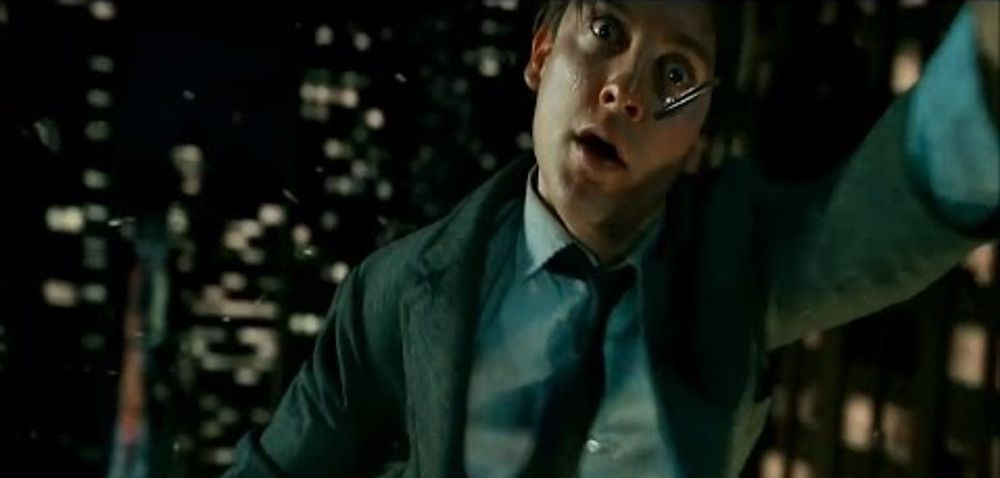
The caliber of digital double for a suited-up Tobey Maguire increased dramatically between Spider-Man and its sequels. The only way to tell the real Maguire and his CGI stand-in apart was to estimate whether the action on-screen could be performed by an actual human being. If it was a feat only a superhero could feasibly perform, you knew you were dealing with digital double rather than an A-List actor.
This doesn’t apply to the digital double of Maguire when he’s not wearing the webslinger’s iconic red-and-blue costume. In fact, we’d go so far as to say that the pixelized Peter Parker that scuffles with James Franco’s Harry Osborne leaves a lot to be desired, when you consider its less-than-realistic skin and fabric textures.
4 Quantum Of Solace - Daniel Craig and Glenn Foster
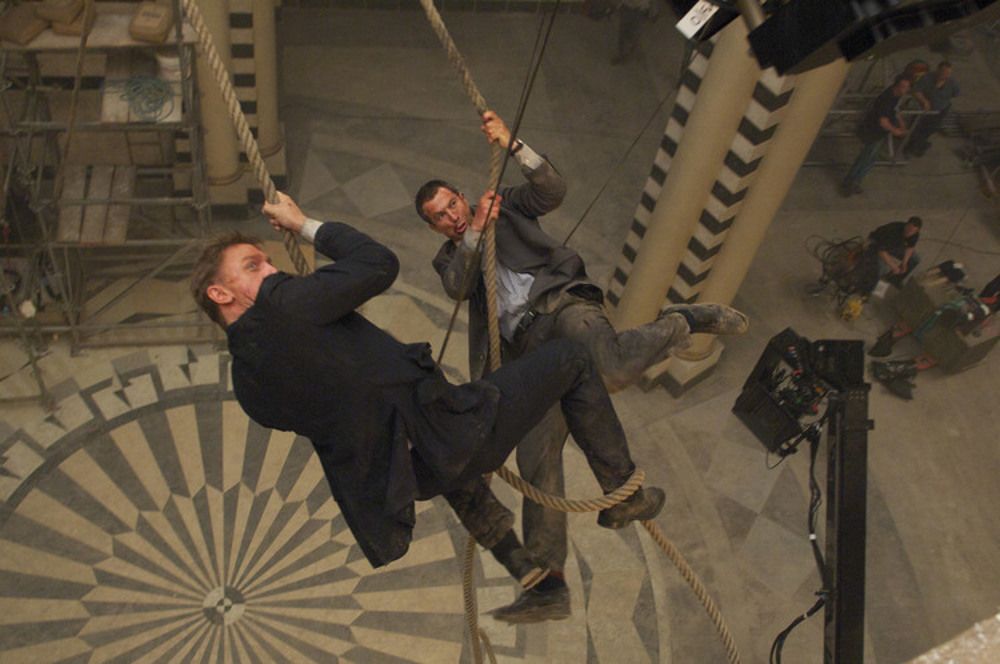
The Daniel Craig James Bond movies have shown an admirable commitment to traditional stuntwork, largely eschewing the available visual effects alternatives. That being said, the filmmakers haven't done away with digital doubles entirely – although sometimes, we wish they had. For instance, in Quantum of Solace – Daniel Craig’s second outing as Agent 007 – Bond engages in a bit of fisticuffs with turncoat Craig Mitchell while dangling from scaffolding several storeys up.
Most of the shots are of Craig (or a stunt performer) and Glenn Foster, who plays Mitchell – but the more dynamic (and therefore dangerous) manoeuvres feature their digital doubles, instead. Ordinarily, this wouldn’t be an issue-- except that the CGI stand-ins for Craig and Foster aren’t quite up to snuff. Fortunately, these shots are very brief, but you’ll pick them out nonetheless.
3 Star Wars – Episode III: Revenge Of The Sith - Ewan McGregor
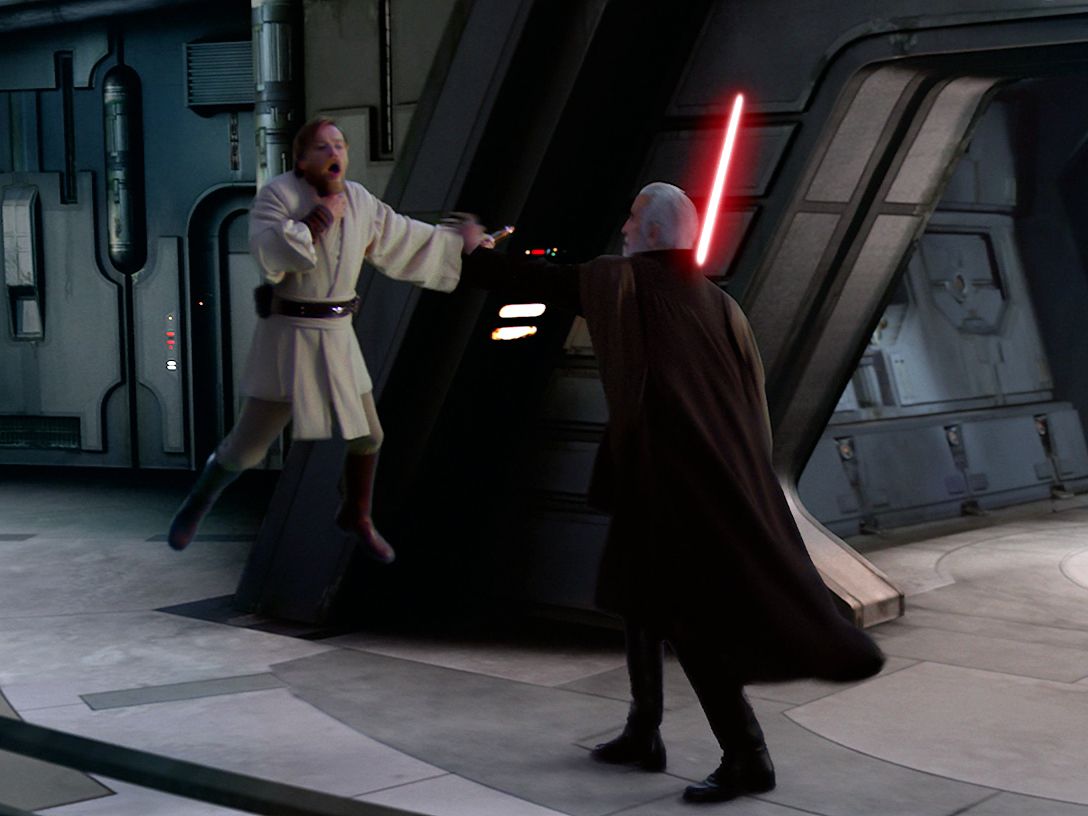
As the newest entry in the Star Wars prequel trilogy, Revenge of the Sith can lay claim to the strongest visual effects of the three films. However, since it was released 13 years ago, there were still some things that ILM struggled with – including realistic digital doubles,
We could probably have filled this entire list with entries from Revenge of the Sith, but we’ll limit ourselves to just the one.
When Anakin Skywalker and Obi-Wan Kenobi clash lightsabers with Count Dooku, the elderly Sith Lord uses his Dark Side powers to fling Kenobi towards the camera. It’s an awesome show of strength – it just doesn’t look very believable. But then, that’ll happen when you wave a CGI model of Ewan McGregor covered in smudgy textures right under the audiences’ noses!
2 Die Another Day
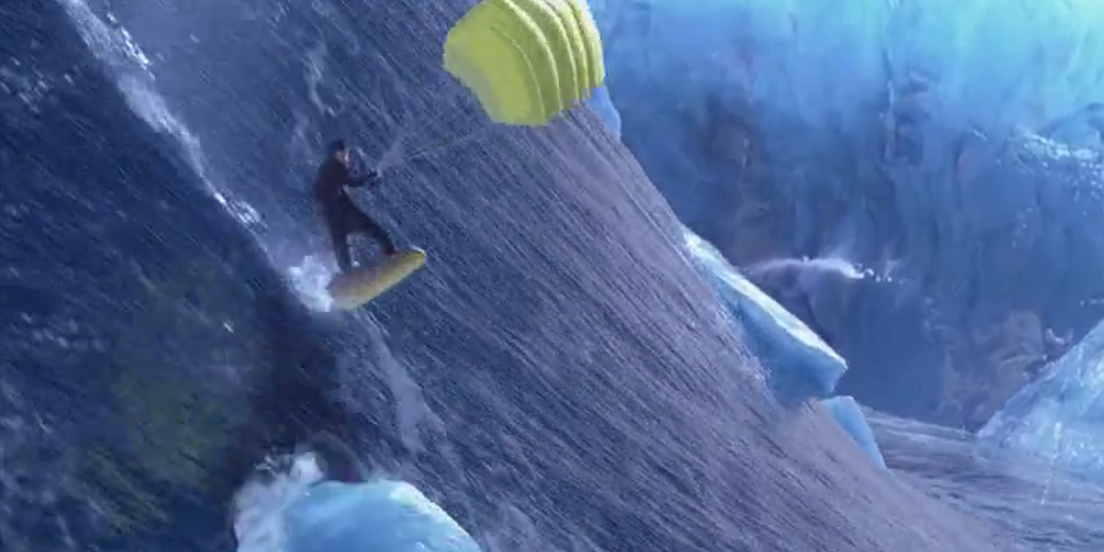
Even the very finest visual effects ever committed to the silver screen would be hard pressed to make a middle-aged guy surfing on a tsunami wave seem legit. However, the creative team behind Die Another Day tried (and failed) to stage a scene of Pierce Brosnan’s James Bond doing just that.
Labelling this set piece a failure is an understatement: it’s easily among the most lampooned moments in the franchise’s long history. It’s not hard to see why, either: in addition to unconvincing close-ups of Brosnan that were clearly filmed against a green screen, audiences had to watch wide-shots featuring a CGI version of the actor that looks ludicrously fake!
1 Batman Forever

Batman Forever is widely reviled by comic book fans and cinema buffs alike, thanks to director Joel Schumacher’s campy take on the Dark Knight. This vitriol is so extreme that it overshadows the film’s few good points, including digital doubles that were genuinely respectable by 1995 standards.
Of course, even this small compliment comes with a qualifier, as the CGI used to render the mid-air acrobatics of Val Kilmer’s Batman don’t look so hot today. It’s true that the full-body nature of the batsuit helps mitigate any issues that arise when trying to recreate an actor’s likeness. Even with the digital double’s face obscured, the character model is animated in such a hyper-stylized manner that viewers can immediately tell they’re not watching the real Kilmer in action.
---
Did we miss out any other movies hurt by crazy CGI actor stand-ins? Let us know in the comments!
from ScreenRant - Feed https://ift.tt/2StUJRF





No comments: